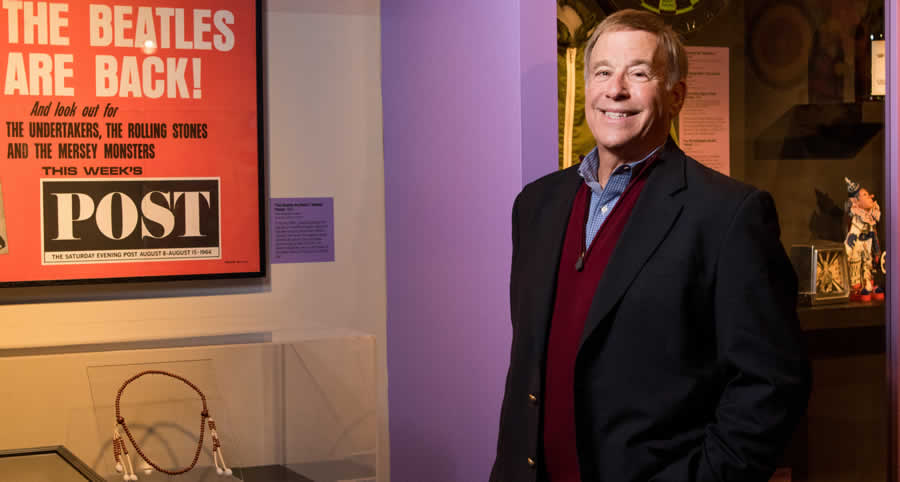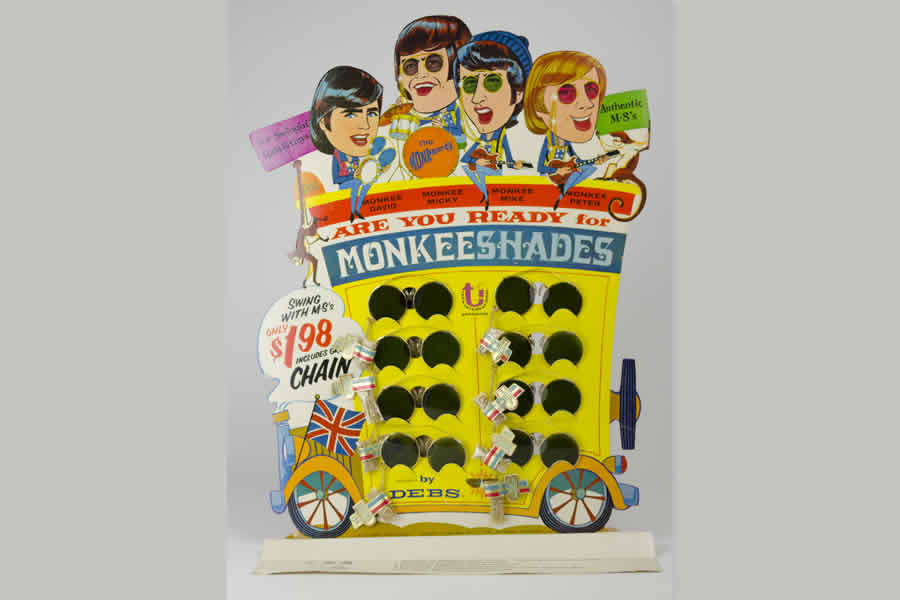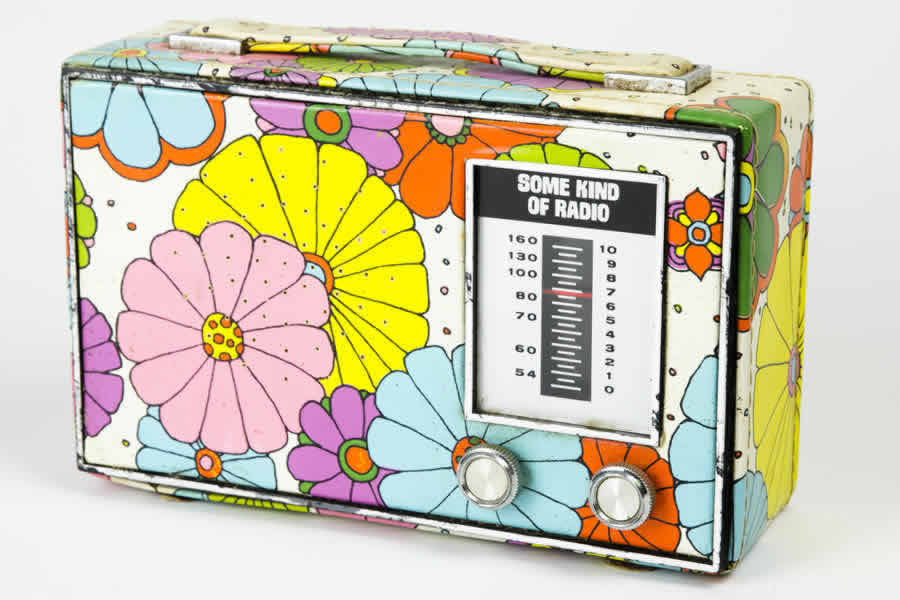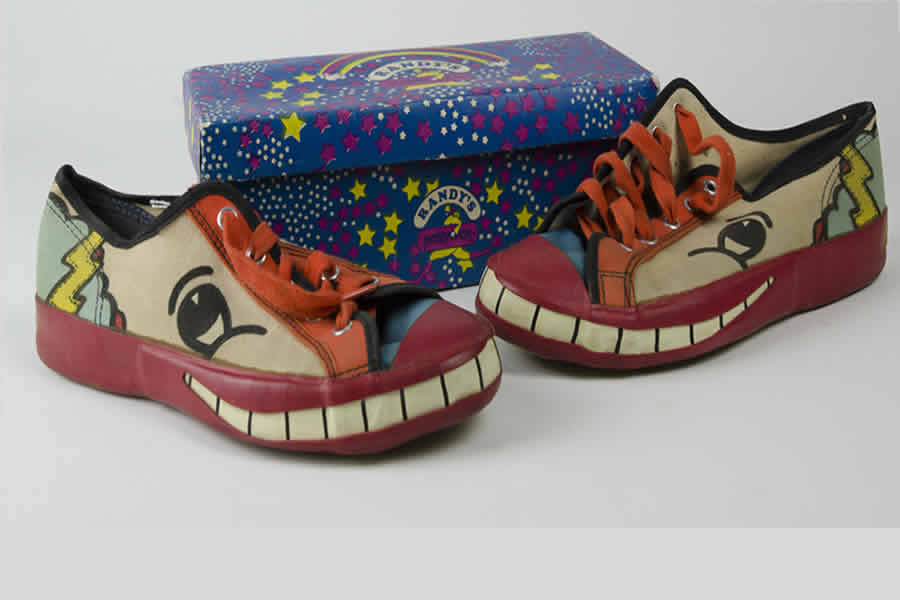MICHAEL STERN’S FASCINATION WITH THE SIXTIES A PERFECT MATCH FOR WOODSTOCK MUSEUM
By Steve Lansdale
It’s been said that invention is born out of necessity.
This impulse is part of the journey that led Atlanta-based collector Michael Stern to landing his collection in a prestigious museum that spotlights Woodstock and the counterculture of the 1960s.
“Love for Sale: The Commercialization of the Counterculture” is on exhibit at Bethel Woods Center for the Arts in Liberty, N.Y., a little over 100 miles northwest of New York City. Museum director Wade Lawrence hails the collection for its array of subjects, from political memorabilia, including mementos from the Vietnam War, to race relations to the extraordinary music of the era and even vintage black-light posters. “I have never come across a better collection of popular culture items,” Lawrence says.
Stern, an investment advisor, has been collecting for much of his life, beginning when he stockpiled Civil War cards. By the time he was about 20, he began trading Hummel figurines for Disneyana collectibles, only to realize there were no books or guides available on the subject, prompting Stern to fill the void on his own, writing four price guides on all things Disney. His collector-turned-author role continued when he started collecting – and eventually writing price guides about – Beatles memorabilia. Stern’s status as an acknowledged expert and author, Lawrence says, lends immediate credibility and value to the collection.
Enlarge

Stern, now 64, then embarked on a collection that reflected the era in which he grew up: counterculture. When he was in high school, people went streaking. The drug and sexual revolutions were well under way. Social activity was boosted by events such as the shootings at Kent State University and the Vietnam War. “I lived it, and it was cool to me that things were findable at the time,” Stern says of mementos from the era, “and not so much on the expensive level.”
The Intelligent Collector visited with Stern to discuss his “Love for Sale” collection, of which he estimates 20 percent is on display at the museum. Stern looked back at his first steps into the collecting world, and offered advice to those who collect with an eye toward one day landing a museum exhibit.
How did the “Love for Sale: The Commercialization of the Counterculture” collection get its start?
I had bought, in an auction, 50 unseen Woodstock photos that were taken on a little Kodak – they all were marked “Kodak 1969.” They had to be from the festival organizer. Some were taken from up in a helicopter, and they were never published, never seen. I contacted Wade Lawrence, the director of the museum. As it turned out, he and his wife were at a wedding in Savannah, Ga., and they drove up to see me.
Woodstock was the premier musical event of that time, but my thought was more about, “What caused Woodstock? What predated it? After that, what changed?”
He looked at my collection, and after that I made a proposal. The exhibit is called “Love for Sale: The Commercialization of the Counterculture,” so still, there was a commercialization of it, from the black lights to the [smoking] pipes. Everything was for sale. There was a section on the Beatles, a section on drugs, a section on black-light posters – they have their own room. The exhibit really blew me away.
The most recent piece I bought is one of my favorites that I actually bought from Heritage Auctions. It came from the David Gest collection: a Monkees sunglasses store display. It’s a piece I always wanted, and I got it from Heritage last year.
Why was it important to you to get your collection displayed at the museum at Bethel Woods? Why not simply enjoy your collection privately?
I wanted to display it. My bet is that it is the most complete pop-culture collection in the world. There are maybe 500 posters, including a lot you can’t display. Out of the All in the Family section, they took maybe 10 pieces. They stayed away from Playboy. There’s a good assortment in the selections they have. It shows the era I grew up in, that so many people grew up in. I wanted to share those memories with people.
What do you think of the way the exhibit turned out?
This is no rinky-dink exhibit. The way they have set up the museum, and this exhibit, is amazing. The exhibit will be there until Dec. 31, but the whole museum is great. The top floor has a “hippie bus” in the middle of the Sixties & Woodstock exhibit, and they have another piece – which I also bought from Heritage – that was an original [Jimi] Hendrix necklace that was given to him by his sometime-producer, confidant and best friend, Mike Quashie.
My favorite items in the collection probably are the groupings at the real heart of commercialization, like the store displays of that era – things featuring the Beatles, the Monkees, some sunglasses, peace signs. One of the great things [museum curators] did was recreate the signage of the era, to help complete the look.
What advice would you have for others who would like to see their collections displayed in a museum?
You really need to collect on a theme, and then find the museum that has a basic pledge or promise that reflects that theme. If you look online at the museum at Bethel Woods, its mandate is to teach the message of Woodstock, so it’s the perfect fit for my collection. I think my next move is to try to find a permanent home for it, but for now, it’s in a perfect place.
STEVE LANSDALE is a public relations specialist at Heritage Auctions whose writing has been published in numerous publications, including The Dallas Morning News, Sports Illustrated and D Magazine.
“Love for Sale: The Commercialization of the Counterculture” runs through Dec. 31, 2017, at Bethel Woods Center for the Arts, located at the site of the 1969 Woodstock festival, 200 Hurd Road, Bethel, NY 12720. Visit BethelWoodsCenter.org for details.






